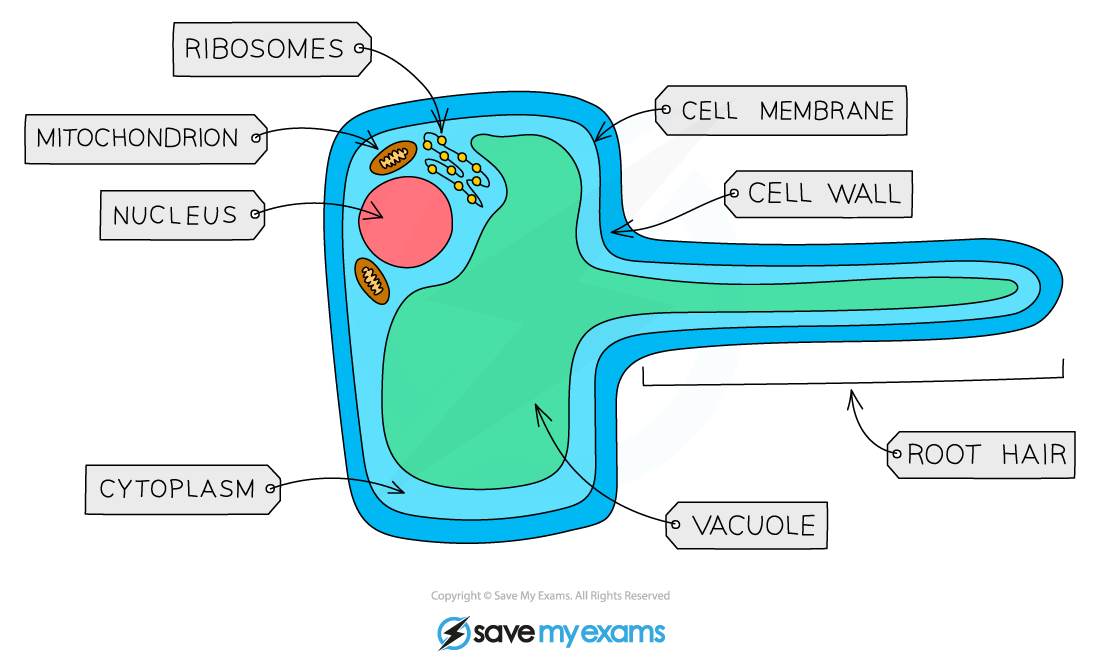Specialisation of Eukaryotic Cells (AQA A Level Biology): Revision Note
Exam code: 7402
Adaptations of eukaryotic cells
In multicellular organisms, eukaryotic cells become specialised to perform specific functions
Their structure is adapted to their role, which explains why different cell types can look very different
Structural adaptations may include:
Cell shape
Presence or absence of specific organelles
Examples:
Red blood cells are biconcave and lack a nucleus, creating more space for oxygen transport
Protein-producing cells contain many ribosomes to support high levels of protein synthesis
Other examples include:
Neurones (nerve cells)
Function: Conduction of nerve impulses
Adaptations:
Cell body contains most organelles and is the site of protein synthesis
Dendrites receive signals; axons transmit them to other cells
Long axon (up to 1m) enables fast, long-distance transmission
Myelin sheath insulates axon and increases speed of impulse conduction

Muscle cells
Function: Contraction for movement
Adaptations:
Three types in animals: skeletal, smooth, and cardiac
Protein filaments (actin and myosin) slide over each other to cause contraction
High density of mitochondria for ATP production via respiration
Skeletal muscle cells fuse during development to form multinucleated fibres

Sperm cells
Function: Fertilisation of the egg and delivery of the father's DNA
Adaptations:
Head contains haploid nucleus with genetic material
Acrosome contains digestive enzymes to penetrate the egg
Mid-piece packed with mitochondria to provide energy for movement
Tail rotates to propel the sperm towards the egg

Root hair cells
Function: Absorption of water and mineral ions from the soil
Adaptations:
Root hair increases surface area to maximise absorption
Thin cell wall reduces diffusion distance
Vacuole contains concentrated cell sap to maintain a water potential gradient
Mitochondria provide ATP for active transport of mineral ions
No chloroplasts as they are found underground and not exposed to light

Xylem vessel cells
Function: Transport of water and dissolved mineral ions
Adaptations:
No end walls between cells forming a continuous tube
Cells are dead and lack organelles for unimpeded water flow
Walls thickened with lignin for strength and structural support

Phloem vessel cells
Function: Transport of sugars and amino acids (translocation)
Adaptations:
Living cells joined end-to-end with sieve plates for solute flow
Few subcellular structures to aid transport
Companion cells provide ATP and regulate transport processes

Examiner Tips and Tricks
In the exam, you might be asked to explain how a specialised cell is adapted to its function based on its organelles or structure
To answer these questions, think about what the cell needs to do its job and which organelles would help with that (e.g. a cell that photosynthesises will need lots of chloroplasts)

Unlock more, it's free!
Did this page help you?